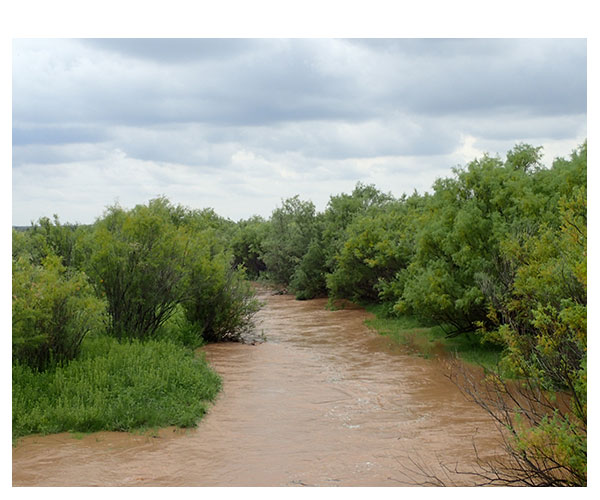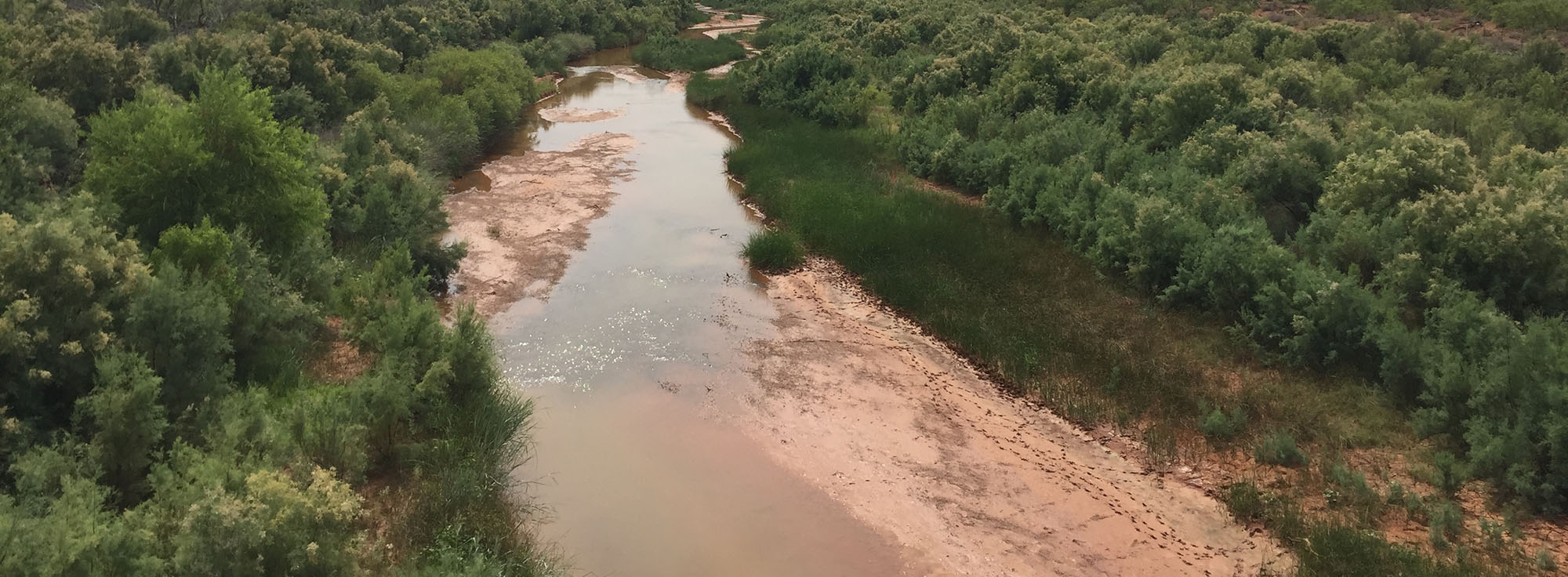Saltcedar Management on the Upper Brazos River
Saltcedar (Tamarix spp.) is non-native to Texas and has become highly invasive across millions of acres of the Southwest. Ground-nesting birds such as turkey and quail suffer from saltcedar invasion, as do fishes that have specific habitat requirements. Saltcedar, in contrast to mesquite and other nuisance brush species, grows in dense thickets across river floodplains and can consume large quantities of water and reduce water availability. Saltcedar thickets growing along river banks displace native plants and degrade habitat for wildlife. Thickets also trap sediment and alter the shape of the river channel. As the channel deepens, crossings can become impassable, the river’s ability to overflow its banks is reduced, and water quality is reduced.
Management of saltcedar using targeted, aerial herbicide application can help begin to restore habitat for a diversity of fish and wildlife species and support healthy river function. In 2015, TPWD began a partnership with landowners as well as other agencies to manage saltcedar in the Brazos River headwaters region. Aerial herbicide treatment with the aquatic-approved formulation of imazapyr is provided at no cost to landowners. Other key project partners include TPWD Inland Fisheries and Wildlife Divisions, USFWS Partners in Fish and Wildlife Program, University of Texas – Bureau of Economic Geology, Texas A&M AgriLife Extension, and Texas Tech University. For more information on project participation, see the Learn More section below.
Project Highlights
- Aerial surveys of saltcedar infestation have been completed on more than 600 river miles in the upper Brazos River basin upstream of Possum Kingdom Reservoir.
- In 2016, large-scale management of saltcedar began with treatment on the Double Mountain Forks. Saltcedar treatment expanded to the Salt Fork and main stem of the Brazos in 2018, and efforts to fill in treatment gaps on the Double Mountain Forks are ongoing. Eventually, treatment may continue as far downstream as Possum Kingdom Reservoir.
- Since 2016, 20,198 acres of invasive saltcedar have been treated on nearly 140 ranches along rivers and major creeks in the upper Brazos River basin.
- Saltcedar beetles, a biological control agent, are present but the most recent surveys indicate that population numbers remain low in the treatment area. Untreated creeks and draws serve as refuges for beetles so that they can continue to help with control by targeting regrowth.
- Research is underway at sites throughout the upper watershed to evaluate the effects of saltcedar control on water budget, water quality, river channel shape, and the riverside plant communities that provide important habitat for wildlife.

For more information on this program, email Brazos.Saltcedar@tpwd.texas.gov (best option) or call:
Monica McGarrity, Senior Scientist for Aquatic Invasive Species - 512-552-3465
